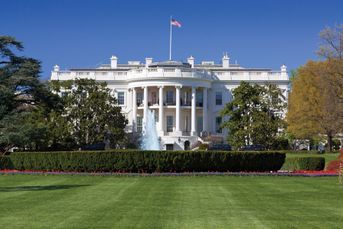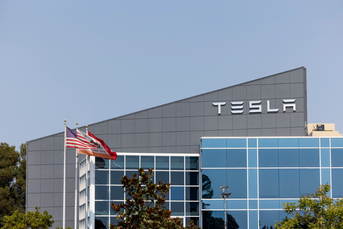Fed to start shrinking portfolio in October
Policymakers signal one more rate hike this year, saying storms should have only a temporary impact on the economy.
Federal Reserve officials set an October start for shrinking their $4.5 trillion stockpile of assets, moving to unwind a pillar of their crisis-era support for the economy. They continued to forecast one more interest-rate hike later this year, saying storm damage will have only a temporary impact on the economy.
“Hurricanes Harvey, Irma and Maria have devastated many communities, inflicting severe hardship,” the Federal Open Market Committee said in its statement Wednesday following a two-day meeting in Washington. “Storm-related disruptions and rebuilding will affect economic activity in the near term, but past experience suggests that the storms are unlikely to materially alter the course of the national economy over the medium term.”
Policy makers left the benchmark interest rate unchanged in a range of 1% to 1.25%.
U.S. central bankers are counting on steady growth and low unemployment to raise inflation closer to their goal, which would support their policy of gradual tightening through interest-rate increases and a reversal of quantitative easing.
“When the storm effects fade the economy will be as strong as before they hit, and that requires the gradual normalization of policy to continue,” Ian Shepherdson, chief economist at Pantheon Macroeconomics, wrote in an emailed note.
The announcement is a third big policy step for Janet Yellen, now in the final year of her term as Fed chairwoman: She has overseen the end of large-scale asset purchases; the liftoff of rates from zero; and now the pullback from an unprecedented balance-sheet buildup without disruption to financial markets or the economy so far.
While the storms will temporarily boost inflation thanks to higher prices for gasoline and other items, “apart from that effect, inflation on a 12-month basis is expected to remain somewhat below 2 percent in the near term but to stabilize around the committee’s 2 percent objective over the medium term,” the Fed said.
The economy expanded at a 2.1% annual rate in the first half, in line with the pace during this expansion, and U.S. government 10-year notes yield about 2.24%, down from 2.45% at the start of the year. The Fed’s preferred price gauge rose 1.4% in July from a year earlier.
“The labor market has continued to strengthen” and economic activity “has been rising moderately so far this year,” the Fed statement said. The FOMC repeated language saying that “near-term risks to the economic outlook appear roughly balanced.”
The decision to leave the target range for the federal funds rate unchanged and begin the balance-sheet runoff in October was unanimous. The Fed reiterated that interest rates are likely to rise at a “gradual” pace, though updated forecasts indicated that officials see the path as less steep than before.
In their new set of projections, Fed officials estimated three quarter-point rate hikes would be appropriate next year — the same number they saw in June — based on the median in the so-called dot plot of interest-rate forecasts.
The Fed’s decision to exit from balance-sheet policies comes a decade after the global financial crisis began to tip the economy into a recession at the end of 2007. The reduction in assets will be slow — just $10 billion a month to start.
“They have been very cautious,” Drew Matus, chief market strategist at MetLife Investments, said before the announcement.
“Other countries went into quantitative easing and they are still stuck,” Mr. Matus added. “The U.S. is the first to get out.”
The Fed said the balance-sheet runoff would follow the framework released in June: $6 billion in Treasuries and $4 billion in mortgage-backed securities per month, rising every three months until the amounts reach $30 billion and $20 billion per month, respectively. The Fed anticipates ending the runoff at some point, though it doesn’t yet have a specific date.
(More: Advisers bracing for Fed’s unprecedented bond sale)
Minutes from the July meeting showed deepening worries about a prolonged period of low inflation. FOMC participants — including Fed governors and regional bank presidents — forecast that inflation will reach their 2% target in 2019, compared with an expectation of 2018 in June, based on median estimates. They have missed the target for most of the past five years.
The quarterly projections also showed:
• Four policy makers said the best policy would be to keep rates on hold for the remainder of this year, the same number as in the June projections; one person sought two more rate hikes this year, down from four officials previously.
• Fed officials held their longer-run estimate of the unemployment rate that corresponds to maximum labor resource use at 4.6%, while lowering their projections of the jobless rate in 2018 and 2019 to 4.1%.
• Policy makers lowered their long-run estimate for a federal funds rate that keeps supply and demand in balance in the economy to a median of 2.75%, from 3% in the June projections
• The median estimate for economic growth in 2017 rose to 2.4% from 2.2%, while the core inflation forecast fell to 1.5% from 1.7%; the long-run growth projection was unchanged at 1.8%.
The decision to set the first balance sheet roll-offs for October was in line with the expectations of a majority of analysts surveyed by Bloomberg News ahead of the meeting. Economists had also forecast that Fed policy makers would maintain their projection for one more rate increase this year, and take that action in December.
Learn more about reprints and licensing for this article.








